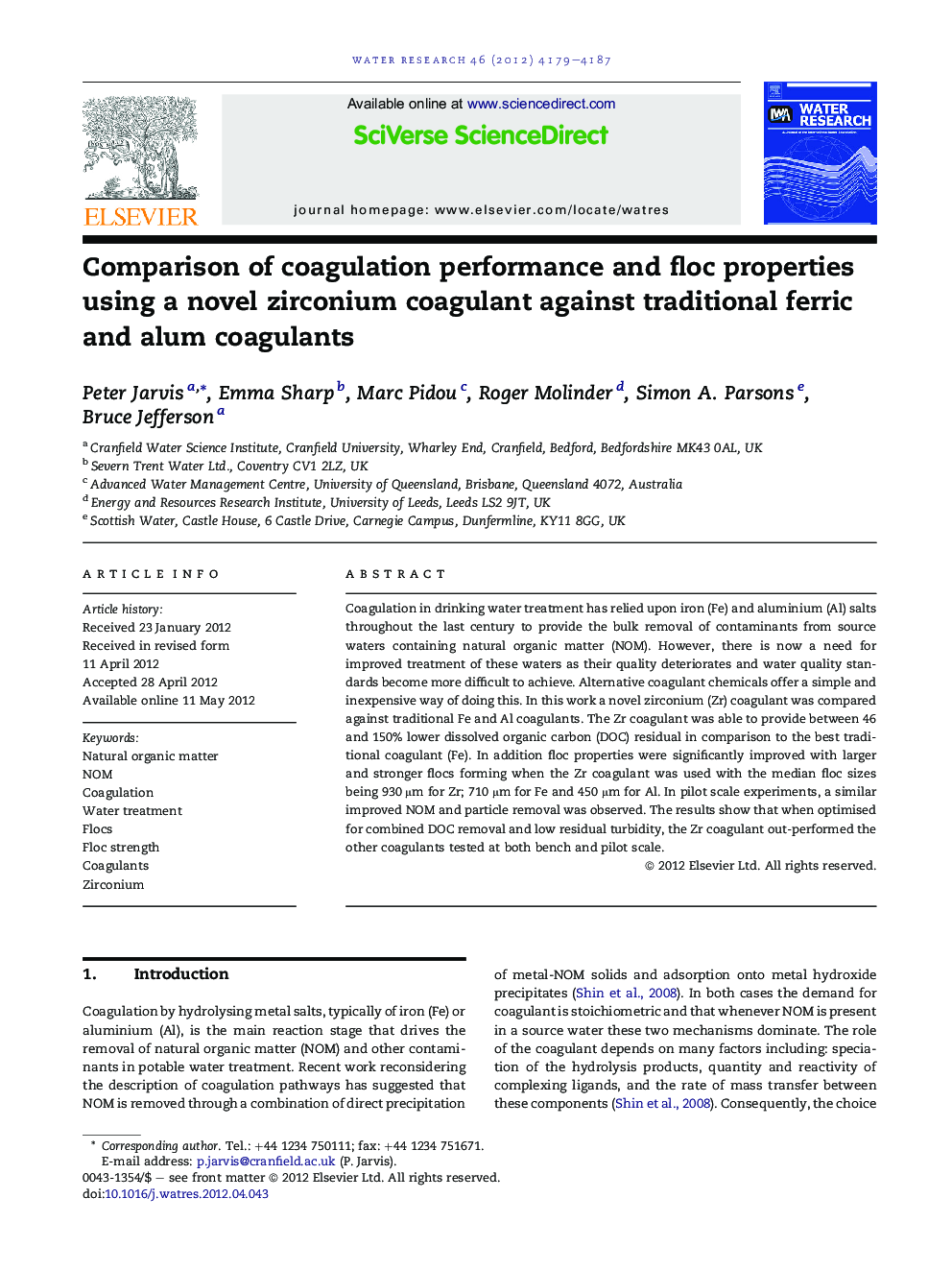| Article ID | Journal | Published Year | Pages | File Type |
|---|---|---|---|---|
| 4482366 | Water Research | 2012 | 9 Pages |
Coagulation in drinking water treatment has relied upon iron (Fe) and aluminium (Al) salts throughout the last century to provide the bulk removal of contaminants from source waters containing natural organic matter (NOM). However, there is now a need for improved treatment of these waters as their quality deteriorates and water quality standards become more difficult to achieve. Alternative coagulant chemicals offer a simple and inexpensive way of doing this. In this work a novel zirconium (Zr) coagulant was compared against traditional Fe and Al coagulants. The Zr coagulant was able to provide between 46 and 150% lower dissolved organic carbon (DOC) residual in comparison to the best traditional coagulant (Fe). In addition floc properties were significantly improved with larger and stronger flocs forming when the Zr coagulant was used with the median floc sizes being 930 μm for Zr; 710 μm for Fe and 450 μm for Al. In pilot scale experiments, a similar improved NOM and particle removal was observed. The results show that when optimised for combined DOC removal and low residual turbidity, the Zr coagulant out-performed the other coagulants tested at both bench and pilot scale.
Graphical abstractFigure optionsDownload full-size imageDownload high-quality image (112 K)Download as PowerPoint slideHighlights► Zr provides improved NOM removal over that of conventional coagulants. ► The improved removal of NOM using Zr resulted in low THM formation. ► The Zr coagulant produced stronger and more robust flocs.
